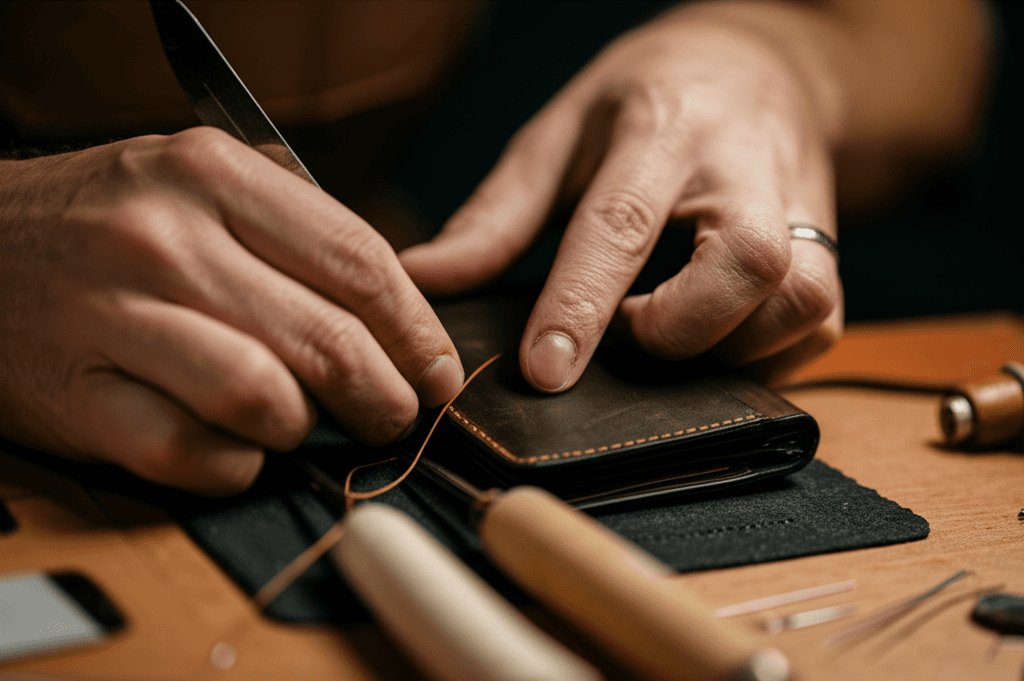
Sustainable Leather: Ethical Fashion and Eco-Friendly Practices
The Sustainability Conversation
Luxury and sustainability can coexist. At Manufact, we believe in creating premium leather goods that respect both craftsmanship and the environment.
What Makes Leather Sustainable?
By-Product of Food Industry
Quality leather is primarily a by-product of the meat industry. Using these hides prevents waste and adds value to materials that would otherwise be discarded.
Longevity Over Fast Fashion
A well-made leather bag can last 20-30 years or more, replacing dozens of synthetic alternatives. This longevity reduces overall environmental impact.
Biodegradability
Unlike synthetic materials, natural leather is biodegradable. Vegetable-tanned leather breaks down naturally without releasing harmful microplastics.
Ethical Sourcing Practices
Transparent Supply Chain
Know where your leather comes from. Reputable brands disclose their sourcing and tanning processes.
Vegetable Tanning
Traditional vegetable tanning uses natural materials (tree bark, leaves) instead of harsh chemicals. It's more time-consuming but environmentally friendly.
Artisan Support
Supporting handcrafted leather goods preserves traditional skills and provides fair wages to skilled artisans.
Environmental Considerations
Water Usage
Modern leather processing has significantly reduced water consumption through recycling and treatment systems.
Chemical Management
Responsible tanneries properly treat and dispose of chemicals, minimizing environmental impact.
Energy Efficiency
Many modern facilities use renewable energy and implement energy-saving practices.
Comparing Alternatives
Vegan Leather (PU/PVC)
Pros: Animal-free, cheaper
Cons: Made from petroleum, non-biodegradable, shorter lifespan, sheds microplastics
Plant-Based Alternatives
Examples: Mushroom leather, pineapple leather, cactus leather
Status: Promising but still developing. Durability and scalability challenges remain.
Traditional Leather
Pros: Durable, biodegradable, by-product use, long-lasting
Cons: Requires proper sourcing and processing oversight
How to Shop Sustainably
1. Choose Quality Over Quantity
Invest in fewer, better-made pieces that will last decades.
2. Research Brands
Look for transparency about sourcing, tanning methods, and worker conditions.
3. Care for Your Items
Proper maintenance extends life, reducing the need for replacements.
4. Repair, Don't Replace
Quality leather can be repaired. Consider professional restoration for damaged items.
5. Buy Secondhand
Vintage leather goods can be excellent quality and give existing items new life.
The True Cost of Fast Fashion
A $50 synthetic bag lasting 1 year requires 20-30 replacements over a lifetime. A $500 leather bag lasting 30 years is both economically and environmentally superior.
Manufact's Commitment
We source premium full-grain leather from responsible suppliers. Our handcrafted approach ensures each piece is made to last, reducing waste and supporting traditional craftsmanship in Lebanon.
Certifications to Look For
- Leather Working Group (LWG) certification
- ISO 14001 (Environmental Management)
- REACH compliance (chemical safety)
- Fair Trade certification
Conclusion
Sustainable fashion isn't about avoiding leather - it's about making informed choices, buying quality, and caring for what you own. Premium leather goods represent a sustainable choice when sourced ethically and crafted to last.
--- ## Related Articles ### How to Spot Fake vs Real Leather: Expert Authentication Guide 2025 **Similar Category** • Buying Guides Learn professional techniques to identify genuine leather from synthetic fakes. Protect yourself from counterfeit goods with our comprehensive authent... [Read More →](/blog/how-to-spot-fake-vs-real-leather) ### Understanding Different Types of Leather: Complete Guide **Similar Category** • Leather Education Comprehensive guide to leather types used in premium goods. Learn the differences between full-grain, top-grain, suede, and more.... [Read More →](/blog/leather-types-complete-guide) ### Ultimate Leather Care Guide: How to Maintain Your Premium Leather Goods **Similar Category** • Care & Maintenance Learn professional techniques to keep your leather bags, shoes, and accessories looking pristine for years. Complete guide with expert tips.... [Read More →](/blog/ultimate-leather-care-guide) ### Men's Leather Boot Styles Lebanon 2025: Complete Fashion Guide **Similar Category** • Men's Fashion Discover the best men's leather boot styles for Lebanon. Chelsea boots, chukka boots, dress boots, and casual boots guide for Lebanese men's fashion 2... [Read More →](/blog/mens-leather-boot-styles-lebanon-complete-guide) ### Luxury Leather Gifts Under $300 Lebanon 2025: Premium Gift Guide **Similar Category** • Gift Guides Discover the best luxury leather gifts under $300 in Lebanon. Perfect premium presents for birthdays, anniversaries, weddings, and special occasions i... [Read More →](/blog/luxury-leather-gifts-under-300-lebanon) ### Mediterranean Climate Leather Care: Complete Lebanon Protection Guide 2025 **Similar Category** • Care & Maintenance Protect your leather goods in Lebanon's humid Mediterranean climate. Expert guide to summer heat, winter rain, salt air, and humidity protection for p... [Read More →](/blog/mediterranean-climate-leather-care-lebanon)Enjoyed this article?
Visit our boutique at Al-Arz Highway Koura Plaza, Koūsha, Lebanon to experience our handcrafted leather collection in person.